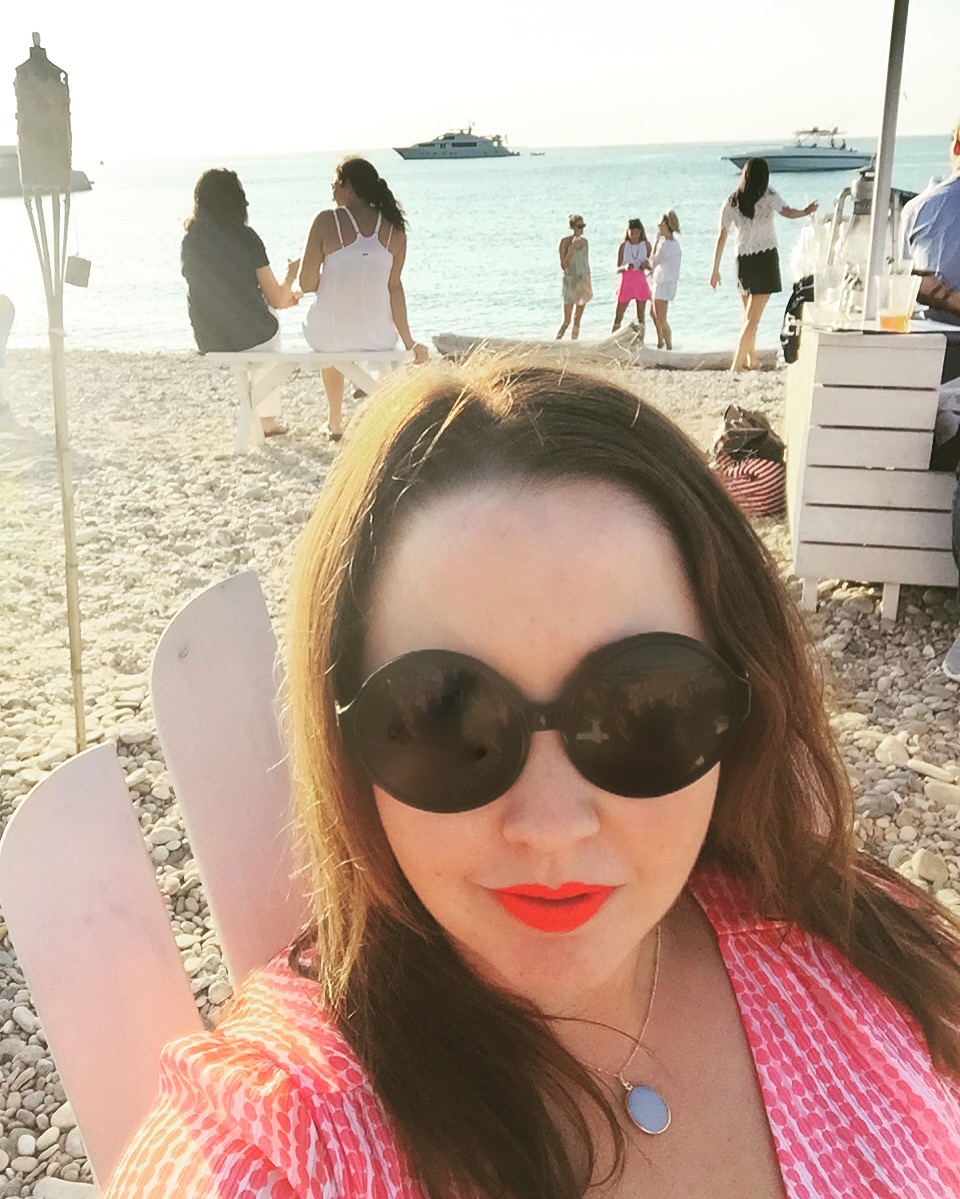When I started researching things to do in Berlin, I was awestruck by the number of museums. I haven’t done the tallies, but it rivals (possibly surpasses?) New York in terms of sheer quantity. My mom came to visit last week, and since she’s an art historian, we decided to tackle as many as we could.
If you want to do the same, I highly recommend the Museum Pass–29 Euro for 30 state museums in three days. Yep, challenge extended. It doesn’t cover everything, which I’ll explain below, but it’s worth the cost if you want to museum hop.
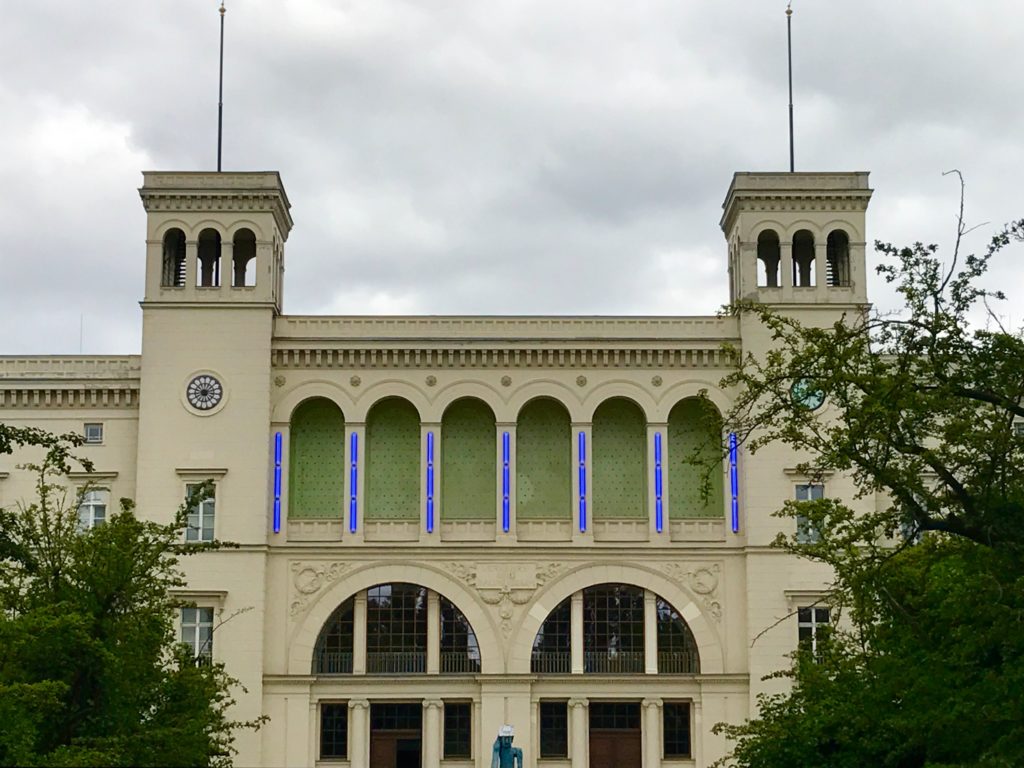
Hamburger Bahnhof focuses on contemporary art, and it was my favorite museum we visited. My love for it started when we walked up; I adore the contemporary light installation on the exterior that contrasts with the traditional building. It has a permanent collection that includes Warhol’s absolutely massive Mao, as well as works by Rauschenberg, Lichtenstein, Joseph Beuys, and Anselm Kiefer.
It also houses many temporary contemporary art exhibitions. I’ll be honest–a lot of contemporary art leaves me cold. One exhibit consisted of a room with multiple wooden crates, and that sort of thing always makes me feel like Tom Hanks in Big: “I don’t get it.” But there were a co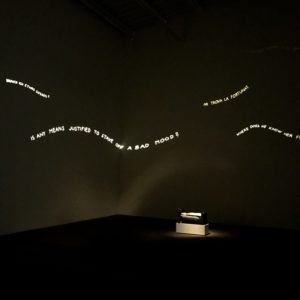 uple of absolutely beautiful exhibits as well. In one, you walked downstairs into a dim room with a piano and fake snow covering the ground. Snow fell on you as you entered, and on one wall was a lovely animated film with a girl playing the piano in a room with snow.
uple of absolutely beautiful exhibits as well. In one, you walked downstairs into a dim room with a piano and fake snow covering the ground. Snow fell on you as you entered, and on one wall was a lovely animated film with a girl playing the piano in a room with snow.
The exhibit I most enjoyed, pictured on the right, was a dark room with benches against one wall where you could sit. A tiny bed was illuminated, and multiple projectors shot questions onto the walls in different languages, like the thoughts you have as you try to fall asleep, by turns funny and thought-provoking.
Museum Island
The best known collection of museums in Berlin is gathered on “Museum Island.” It consists of five museums: the Altes Museum, Neues Museum (not to be confused with the currently closed Neue Nationalgalerie), the Alte Nationalgalerie (anyone else think Berlin needs some new museum names?), the Bode-Museum, and the Pergamon. A sixth museum will join in 2019.
On a practical note, there is an 18 Euro pass that covers all of these museums, so if you have just a couple days in Berlin, that might be a good idea. But if you want to visit my fave Hamburger Bahnhof, too, then spring for the Museum Pass.
The Pergamon is Berlin’s most popular museum, and it has the lines to prove it. Buy a timed entry ticket to avoid a lengthy wait. (*Protip*: If you buy the Museum Pass, you can get a free timed ticket using the “Pergamonmuseum frei: übrige” option.” That took me half an hour or so of Googling to sort out; it’s not at all intuitive.)
The two most famous displays in this museum are the Pergamon Altar, which is currently being refurbished, and the Ishtar Gate, which is truly stunning. The Ishtar Gate was the eighth gate to Babylon, constructed in 575 BCE. It towers over you, filling the room, and it’s gorgeous, covered in a lapis lazuli mosaic. Don’t hate me, but I don’t have a picture for you–to me, it’s something best experienced in person. I appreciated it more standing in front of it, contemplating an ancient civilization, than I ever could from the bare fact of its appearance.
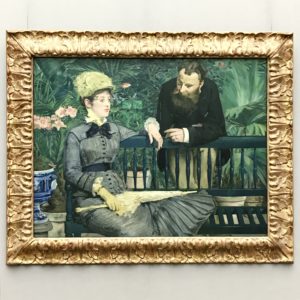 Our other Museum Island stop focused on romantic and Impressionist painting–more of the former than the latter. There are several works by artists you’ll recognize; I particularly enjoyed the “another mansplainer” expression on the woman in the Manet on the left. But the bulk of the pieces were by German artists with whom even my mom was unfamiliar–I think this is one of the joys of visiting museums in different countries, but you may disagree.
Our other Museum Island stop focused on romantic and Impressionist painting–more of the former than the latter. There are several works by artists you’ll recognize; I particularly enjoyed the “another mansplainer” expression on the woman in the Manet on the left. But the bulk of the pieces were by German artists with whom even my mom was unfamiliar–I think this is one of the joys of visiting museums in different countries, but you may disagree.
We didn’t visit the other three Museum Island spots. I’m sure they’re lovely, but they just don’t contain works in which we’re particularly interested. The Bode-Museum features coins, Byzantine art, and sculptures; the Altes Museum 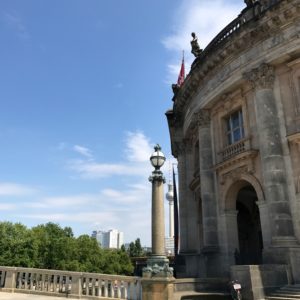 has antiquities; and the Neues Museum has Egyptian and early history work, including the bust of Nefertiti.
has antiquities; and the Neues Museum has Egyptian and early history work, including the bust of Nefertiti.
Whether or not you love art, though, you should stroll through Museum Island; the buildings themselves are lovely, including the Bode-Museum at right.
Kulturforum
Another set of museums is clustered into the Kulturforum, but unfortunately, we didn’t make it there. One of the main attractions, the modern art-focused Neue Nationalgalerie, is closed for refurbishment until 2019, so the only museum that really tempted us was the Gemäldegalerie, which houses old masters like Caravaggio. The other offerings, such as the Musical Instrument Museum, were much lower on our arts and culture wish list. Once the Neue Nationalgalerie is reopen, though, I’d definitely prioritize this complex.
Charlottenburg
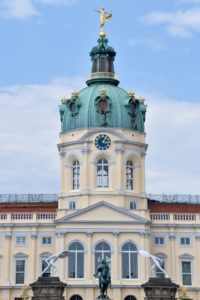 The final museum cluster sits around Schloss Charlottenburg, which, while lovely (see left), unfortunately isn’t covered by the Museum Pass. Mom and I aren’t so into furnishings, so we decided to pass. Nearby, though, are the Scharf-Gerstenberg Collection, featuring works by Dali and Goya among others; the Berggruen Museum, with Picasso, Klee, and more; and the Bröhan-Museum, housing art nouveau and deco arts and crafts. While I’m sure we would have enjoyed all three museums, we visited on the afternoon of our last day, completely exhausted, and only made it into the Scharf-Gestenberg–and to be totally honest, we didn’t even make it up the stairs there.
The final museum cluster sits around Schloss Charlottenburg, which, while lovely (see left), unfortunately isn’t covered by the Museum Pass. Mom and I aren’t so into furnishings, so we decided to pass. Nearby, though, are the Scharf-Gerstenberg Collection, featuring works by Dali and Goya among others; the Berggruen Museum, with Picasso, Klee, and more; and the Bröhan-Museum, housing art nouveau and deco arts and crafts. While I’m sure we would have enjoyed all three museums, we visited on the afternoon of our last day, completely exhausted, and only made it into the Scharf-Gestenberg–and to be totally honest, we didn’t even make it up the stairs there.
There are a number of smaller museums scattered around the city to visit as well, featuring everything from design to sculpture to photography; you can find a complete list here. We did visit the tiny Bauhaus-Archiv. With just two rooms, we only spent a brief 20 minutes there, but there’s a nice gift shop and cafe.
And the Museum Pass collection extends beyond art. Before Mom arrived, I visited the Museum für Naturkunde, or Natural History Museum. You might find it a bit small, particularly if you’ve been to New York’s Natural History Museum. But I have a not-so-mild T. rex fascination, and they have Tristan, the third-most complete skeleton in the world.
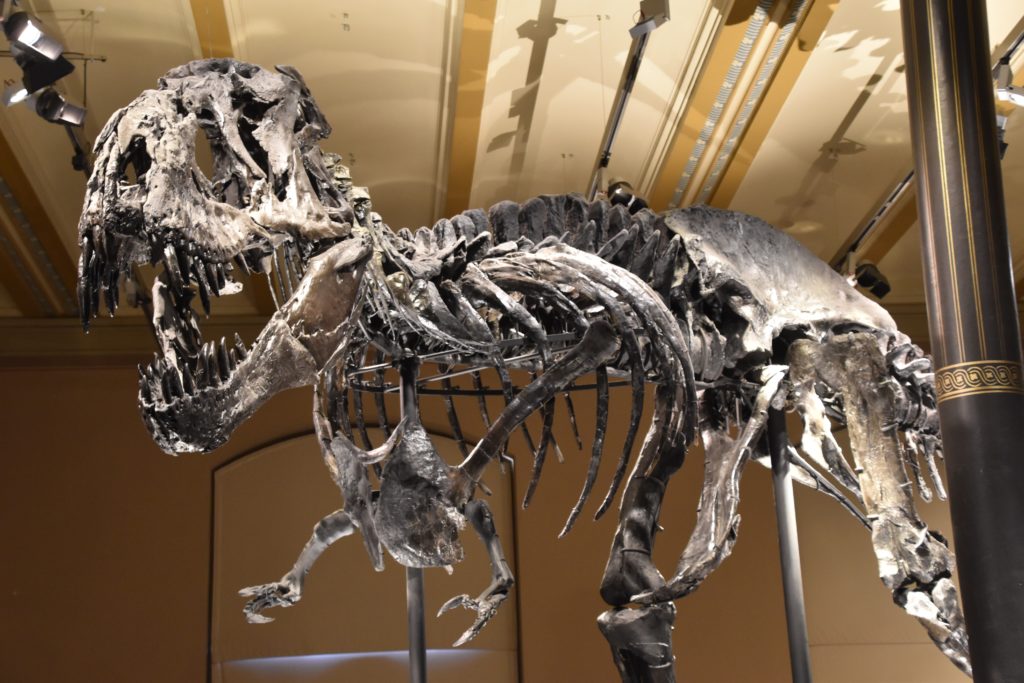
History Museums
There are also a number of museums in Berlin focused on the history of the city. We visited two of them that aren’t part of the Museum Pass but are well worth a visit.
The Mauermuseum at Checkpoint Charlie tells the story of the wall and the people who attempted escape from East Germany–in everything from specially remodeled cars to a hot air balloon. It has the most information I’ve ever seen in a museum; the walls are absolutely covered with placards in different languages. While it’s overwhelming, it’s also extremely informative.
The DDR Museum teaches you about life in East Berlin–and believe it or not, it makes learning about Communism fun. The exhibits are very interactive, with drawers and doors you can pull open and full reconstructions of rooms, ranging from a kindergarten to a prison cell, that you can go inside.
WHEW. That’s it for my museum roundup. You could easily spend all your time in Berlin going from one to the next, but there’s so much else in the city beyond the museum walls. Stay tuned…







